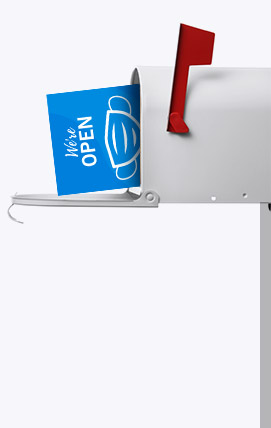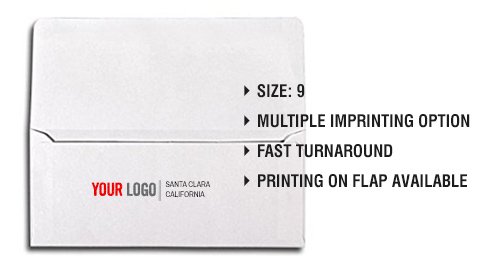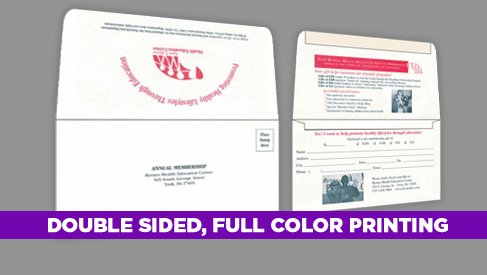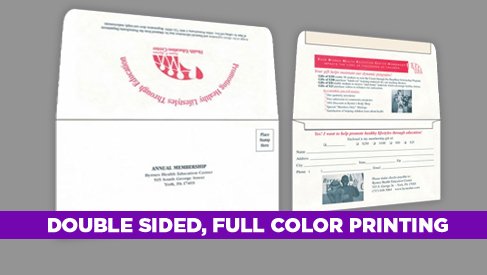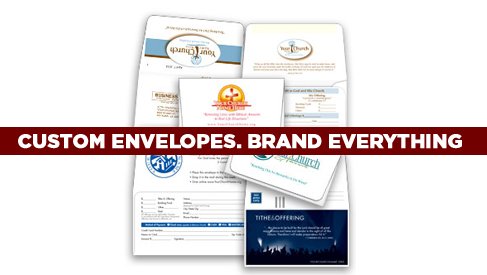-
All Products
3
A
B
- Bag Toppers or Header Cards
- Banner Stands10% Off
- Banners10% Off
- Book Printing10% Off
- Booklets & Catalogs10% Off
- Bookmarks
- Boxes
- Brochures10% Off
- Buck Slip
- Business Cards15% Off
- Button Pins
C
- Calendars10% Off
D
- Die-cut Products15% Off
- Direct Mail Marketing10% Off
- Door Hangers
E
- Envelopes
- Every Door Direct Mail10% Off
F
- Flyers10% Off
- Full Color Roll Label20% Off
H
I
L
- Label, Stickers & Decals 20% Off
- Letterhead
- Luxury Cards10% Off
M
- Magnets10% Off
- Maps
- Market Place10% Off
- Menu Printing
N
P
- Placemats
- Plastic Printing15% Off
- Playing Cards
- Postcards10% Off
- Posters10% Off
- Presentation Folders
- Printing by Industry10% Off
- Promotional Products
R
S
- Sample Kits
- Shaped Products15% Off
- Signs15% Off
T
- Table Tents
- Tickets
- Tote Bags
- Trade Show Products10% Off
- Trading Cards
- T-shirts10% Off
W
- Wall Arts10% Off
- Wrapping Papers
- Wrist Bands
Y
- Yard Signs10% Off
View All Products Looking for something else? Try our Custom Job Service.View All Products Looking for something else? Try our Custom Job Service.View All Products Looking for something else? Try our Custom Job Service. -
Marketing Materials
- Direct Mail Services
-
Business Cards
Standard Business Cards 15% Off
- Standard Business Cards 3.5x210% Off
- Slick Business Card 3.5x1.510% Off
- Tiny Business Cards 3.5x110% Off
- European Business Cards 3.35x2.1710% Off
- View More >>
Soft Touch 17pt. Business Cards 15% Off
- Soft Touch Standard Business Cards 3.5x210% Off
- Soft touch Slick Business Card 3.5x1.510% Off
- Soft Touch Tiny Business Cards 3.5x110% Off
- Soft Touch European Business Cards 3.35x2.1710% Off
- View More >>
Soft Touch 32pt. Business Cards 15% Off
- Soft Touch 32pt. Business Card 3.5x210% Off
- Soft Touch 32pt. Business Card 3.5x1.510% Off
- Soft Touch 32pt. European Business Cards 3.35x2.1710% Off
- Soft Touch 32pt. Square Business Cards 2x210% Off
- View More >>
Foil Accent Business Cards 15% Off
Square Business Cards 15% Off
- Square Business Card 2x210% Off
- Square Business Card 2.5x2.510% Off
- Square Business Card 3x310% Off
Luxury Business Cards 15% Off
- Luxury Business Card 3.5x210% Off
- Luxury Slick Business Card 3.5x1.510% Off
- Luxury European Business Cards 3.35x2.1710% Off
- Luxury Square Business Cards 2x210% Off
- View More >>
Fold Over Business Cards 15% Off
Shaped Business Cards 15% Off
Opaque Plastic Business Cards 15% Off
- Plastic Business Card 3.5x2 inch (US Standard)10% Off
- Plastic Business Card 3.35x2.17 inch (European Standard)10% Off
- Plastic Slick Business Card 3.5x1.5 inch 10% Off
- Plastic Square Business Card 2x2 inch10% Off
- View More >>
Clear Plastic Business Cards 15% Off
- Clear Plastic Business Card 3.5x2 inch10% Off
- Clear Plastic Business Card 3.5x1.5 inch10% Off
- Clear Plastic Business Card 2x2 inch10% Off
- Clear Plastic Business Card 2.5x2.5 inch10% Off
- View More >>
Specialty Business Cards 15% Off
- Gold Business Cards10% Off
- Silver Business Cards10% Off
- Pearl Business Cards10% Off
- Kraft Business Cards10% Off
- View More >>
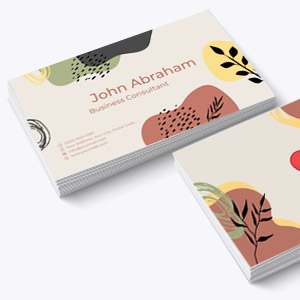
- Books & Booklets
-
Labels & Stickers
-
Invitation & Stationery
InvitationsStationeries
-
Signs & Banners
SignsBannersPostersRigid SignsAdvertising FlagsWall Arts
- Banner Stands 10% Off
- X Banner stand 24" x 63"10% Off
- Everyday Retractable Banner Stand - 33"10% Off
- Economy Retractable Banner Stand - 33"10% Off
- Premium Retractable Banner Stand - 33"10% Off
- Wide Retractable Banner Stand - 47"10% Off
- Tension Fabric Stand 36"x90"10% Off
- Table Top Banner Stand 11.5"x17.5"10% Off
- SD Retractable Banner Stand 36"x92"10% Off
- SD Retractable Banner Stand 48"x92"10% Off
- SD Retractable Banner Stand 60"x92"10% Off
- View More >>
- Banners 10% Off
- 13oz. Standard Vinyl Banner 10% Off
- 13 oz Supersize Vinyl Banner10% Off
- 18oz. Premium Vinyl Banner10% Off
- Pole Pocket Banner10% Off
- Indoor Banner10% Off
- Mesh Banner10% Off
- Fabric Banner10% Off
- Fabric Banner Blockout10% Off
- Signs On Rigid Substrate 10% Off
- PVC Sign (3 mm)10% Off
- PVC Sign (6 mm)10% Off
- Dibond Sign (3 mm)10% Off
- Aluminum Sign (0.04 inch)10% Off
- Aluminum Sign (0.08 inch)10% Off
- Gatorboard Sign (3/16 inch)10% Off
- Foamcore Sign (3/16 inch)10% Off
- Coroplast Sign (4 mm)10% Off
- Coroplast Sign (10 mm)10% Off
- Styrene Sign (30 mil)10% Off
- Clear Acrylic Sign 3/16 inch10% Off
- Magnetic Sign (30 mil)10% Off
- Dry Erase Magnet (30 mil)10% Off
- Dry Erase Dibond10% Off
- View More >>
- Tshirts & Promo
-
Trade Shows
-
- X Banner stand 24" x 63"
- Everyday Retractable Banner Stand - 33"
- Economy Retractable Banner Stand - 33"
- Premium Retractable Banner Stand - 33"
- Wide Retractable Banner Stand - 47"
- Tension Fabric Stand 36"x90"
- Table Top Banner Stand 11.5"x17.5"
- SD Retractable Banner Stand 36"x92"
- SD Retractable Banner Stand 48"x92"
- SD Retractable Banner Stand 60"x92"
- 10ft Event Canopy
- Event Canopy Carrying Bag w/ Wheels
- Event Canopy Hardware
- Replacement Graphics for Event Canopy
- Curve Shape Tension Fabric 10% Off
- Curve Shape Velcro Fabric 10% Off
- Straight Shape Tension Fabric 10% Off
- Straight Shape Velcro Fabric 10% Off
- Table Covers for 6 & 8 ft. Tables
- Stretch Table Throw for 6ft. & 8ft. Tables
- Solid Color Table Covers for 6ft. & 8ft. Tables
- Table Runners
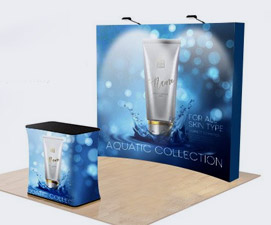
Pop-up Displays
Pop-Up Displays for all sizes of Trade Show Booths (6ft, 8ft, 10ft, 20ft). Comes with full-color printed graphics
Order Now -
- 8ft Straight Tension Fabric Display
- 10ft Straight Tension Fabric Display
- 20ft Straight Tension Fabric Display

Pop-up Displays
Pop-Up Displays for all sizes of Trade Show Booths (6ft, 8ft, 10ft, 20ft). Comes with full-color printed graphics
Order Now
Pop-up Displays
Pop-Up Displays for all sizes of Trade Show Booths (6ft, 8ft, 10ft, 20ft). Comes with full-color printed graphics
Order Now
Pop-up Displays
Pop-Up Displays for all sizes of Trade Show Booths (6ft, 8ft, 10ft, 20ft). Comes with full-color printed graphics
Order Now
Pop-up Displays
Pop-Up Displays for all sizes of Trade Show Booths (6ft, 8ft, 10ft, 20ft). Comes with full-color printed graphics
Order Now
Pop-up Displays
Pop-Up Displays for all sizes of Trade Show Booths (6ft, 8ft, 10ft, 20ft). Comes with full-color printed graphics
Order Now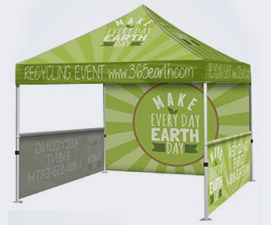
Event Tents
Achieve 360 degrees of branding with a custom full fabric dye sub canopy and hardware package.
Order Now -

Event Tents
Achieve 360 degrees of branding with a custom full fabric dye sub canopy and hardware package.
Order Now
Event Tents
Achieve 360 degrees of branding with a custom full fabric dye sub canopy and hardware package.
Order Now
Event Tents
Achieve 360 degrees of branding with a custom full fabric dye sub canopy and hardware package.
Order Now
Event Tents
Achieve 360 degrees of branding with a custom full fabric dye sub canopy and hardware package.
Order Now
Event Tents
Achieve 360 degrees of branding with a custom full fabric dye sub canopy and hardware package.
Order Now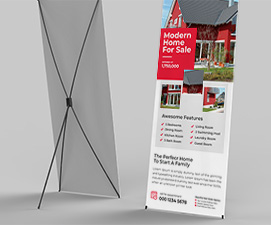
Banner Stands
PrintPapa, one of the top sellers of banner stands in Bay Area, California, offers different types of roll-up banner stands online.
Order Now
-
Printing by Industry
Political Printing 10% Off
Political Campaign Banners 10% Off
Political Campaign Direct Mail Postcards 10% Off
Political Campaign Doorhangers
Political Campaign Flyers 10% Off
Political Campaign Palm Cards
Political Campaign Yard Signs
Filter by Categories
Related Categories
9 Remittance Envelopes (3 7/8 x 8 7/8 closed) (PID: 13397)
Remittance envelopes are used by charities, billing agencies, schools, churches, mail order companies, and by other businesses and organizations for ordering or remittance applications. They provide a large printing surface for order blanks and other information required by the sender. The envelope comes with a large wallet flap and has side seams.
Don't have artwork? No Problem!!
Check out our beautiful design templates 21 of them at Design Papa.
Flat Size : 8.875 x 3.875 inch (width x height)
Artwork Size (No Bleeds allowed):8.875 x 3.875 inch (width x height).
NOTE: 30% ink coverage maximum. We do not print heavy solid backgrounds.
Don't need any printing but need blank envelopes, then visit Market Place. Click here.
Typesetting your address. Just provide us with the logo file and we do the rest. If providing artwork for 1 or 2 color jobs then we will need color seperated artwork for PMS printing. Refer to our Knowledge base or contact our customer service.
We always print on finished envelope. This allows us to offer the lowest prices but does have some limitation when printing in full color. These are listed below:
1. Color Matching: It is very hard or sometimes impossible to match colors. For matching colors we need to be able to print a color control bar on the printed piece and then it is scanned by a spectrophotometer which checks for the color density and automatically controls the inking system on the press. Now since we are printing on a finished envelope, we do not have any space to print the color bar, and hence the ink adjustment has to be eye balled by our press operators. Now our press operators are good and usually can do a fantastic job, but due to this limitation we cannot guarantee color match with other printed stationary product like company letterheads, business cards or even previously printed samples.
2. Printing to the Edge of the Envelope or Full Bleed: Since we are printing on finished envelope, there is a margin all around which cannot be printed, very similar to your home printer. To be able to print full bleed we have to print on bigger sheets of paper and then cut down to the size.
3. Avoid Heavy Ink Coverage on the Seams: If you inspect any envelope closely you will notice that at various position of the envelopes there are multiple layers of paper. For e.g. on the seams there are 3 layers of paper and then it becomes 2 layers. Now due to this varying thickness, the press cannot lay down the ink evenly, and hence the place where there are 3 layers will be more darker then then the place where there are 2 and hence the discoloration. So try to avoid heavy ink coverage on the seams.
If your envelope needs color accuracy then please request for a custom quote or give us a call and explain us what you are looking for.
Black Ink Impriting: The most economical way to imprint your envelope with your company information. If you have a really low budget and deciding between getting blank envelope or a printed one then choose the Blank Ink Imprinting. Simple, Cheap and looks good.
1 Color Imprinting: Most of the logos in the world, if you think of are 1 color. For e.g. the Intel Blue, Coco Cola Red etc. So if your logo is based on a a PMS color, then we can print using that color.
2 Color Imprinting: we will imprinting using 2 Pantone Colors. All we will need is a proper color seperated artwork and the Pantone Color Codes.
Full Color (CMYK) Imprinting: With the digital age, lot of logos now days have lots of color and it is not cost effective to print them using the Pantone Color system, so we print using Full Color CMYK process colors.
We are also able to print on the flap of the envelope. So you can choose the appropriate option.
WHAT IS PMS?
PMS stands for Pantone Matching System, and is a standardized color reproduction system. Similar to the paint swatch guides you find at your favorite paint store, the pantone color chart contains thousands of color swatches created from a palette of basic colors. Color is very subjective, which is why the PMS works so well. It takes all the guesswork out of color identification. Every computer monitor is different, every printer is different. By standardizing the colors, manufacturers and customers in different locations can all refer to the Pantone system to make sure colors match. Creating a Pantone spot color is similar to mixing paint such as blue and yellow to get green, but with much more precision. Each color has a 'PMS' number assigned to it. These numbers are used to identify the color needed. The specified ink is then prepared using the correct mixture of base colors, either purchased pre-mixed from an ink company or mixed on-site at the printing company. Using PMS inks is called spot color printing..
CMYK (or Full Color) vs PMS?
When preparing an image for printing in CMYK, the electronic file is separated into four primary colors: cyan, magenta, yellow and black. The image is recreated using screen tints made up of small dots that are applied at different angles to the four process colors. The separated color images are then transferred to four different printing plates on the press. The colors are then printed one after the other to recreate the original image. The CMYK colors are manufactured colors and are not mixed by the end user. This method can be referred to as 4 color, full-color or standard process printing.
WHEN TO USE PMS?
a. Consistent Branding - Think Coco Cola red or Intel Blue. Using PMS colors for your logo and stationery will allow you to ensure color accuracy and establish a standard that anyone working with your artwork will be able to match.
b. Colors outside the range of CMYK - There are some colors that just can't be produced with CMYK, including colors such as reflex blue, navy blue or bright orange.
c. Color consistency from page to page - If you are printing stationary like letterheads and envelopes or business cards then it might be worth using Pantone. When printing a solid color with process inks, slight variations in the color balance can affect the consistency of the color.
d. Smooth coverage of large areas - A PMS color works well when the consistency and saturation of large areas of a solid ink color is importantIt is used by many printers and graphic artists to deliver reliable, reproducible colors to their customers.
WHY PMS IS NOT ALWAYS THE COST EFFECTIVE OPTION?
Even though PMS is a great option in certain cases, it doesn't always make sense to incorporate it into your printing project. Using spot colors can be more expensive than process inks due to the extra production costs involved in "washing up" and changing out the ink in the press, particularly when using more than one or two PMS colors depending on the printer's manufacturing equipment and processes. Since CMYK process printing uses the same base colors all the time, it's a more cost-effective solution.
Regular is 4 days. For a small rush fee you can select 3 Day, 2 Day and Next Business Day options.
Check out our No Hassle 100% Satisfaction Guarantee Policy.
Remittance envelopes are used by charities, billing agencies, schools, churches, mail order companies, and by other businesses and organizations for ordering or remittance applications. They provide a large printing surface for order blanks and other information required by the sender. The envelope comes with a large wallet flap and has side seams.
Don't have artwork? No Problem!!
Check out our beautiful design templates 21 of them at Design Papa.
Flat Size : 8.875 x 3.875 inch (width x height)
Artwork Size (No Bleeds allowed):8.875 x 3.875 inch (width x height).
NOTE: 30% ink coverage maximum. We do not print heavy solid backgrounds.
Don't need any printing but need blank envelopes, then visit Market Place. Click here.
Typesetting your address. Just provide us with the logo file and we do the rest. If providing artwork for 1 or 2 color jobs then we will need color seperated artwork for PMS printing. Refer to our Knowledge base or contact our customer service.
We always print on finished envelope. This allows us to offer the lowest prices but does have some limitation when printing in full color. These are listed below:
1. Color Matching: It is very hard or sometimes impossible to match colors. For matching colors we need to be able to print a color control bar on the printed piece and then it is scanned by a spectrophotometer which checks for the color density and automatically controls the inking system on the press. Now since we are printing on a finished envelope, we do not have any space to print the color bar, and hence the ink adjustment has to be eye balled by our press operators. Now our press operators are good and usually can do a fantastic job, but due to this limitation we cannot guarantee color match with other printed stationary product like company letterheads, business cards or even previously printed samples.
2. Printing to the Edge of the Envelope or Full Bleed: Since we are printing on finished envelope, there is a margin all around which cannot be printed, very similar to your home printer. To be able to print full bleed we have to print on bigger sheets of paper and then cut down to the size.
3. Avoid Heavy Ink Coverage on the Seams: If you inspect any envelope closely you will notice that at various position of the envelopes there are multiple layers of paper. For e.g. on the seams there are 3 layers of paper and then it becomes 2 layers. Now due to this varying thickness, the press cannot lay down the ink evenly, and hence the place where there are 3 layers will be more darker then then the place where there are 2 and hence the discoloration. So try to avoid heavy ink coverage on the seams.
If your envelope needs color accuracy then please request for a custom quote or give us a call and explain us what you are looking for.
Black Ink Impriting: The most economical way to imprint your envelope with your company information. If you have a really low budget and deciding between getting blank envelope or a printed one then choose the Blank Ink Imprinting. Simple, Cheap and looks good.
1 Color Imprinting: Most of the logos in the world, if you think of are 1 color. For e.g. the Intel Blue, Coco Cola Red etc. So if your logo is based on a a PMS color, then we can print using that color.
2 Color Imprinting: we will imprinting using 2 Pantone Colors. All we will need is a proper color seperated artwork and the Pantone Color Codes.
Full Color (CMYK) Imprinting: With the digital age, lot of logos now days have lots of color and it is not cost effective to print them using the Pantone Color system, so we print using Full Color CMYK process colors.
We are also able to print on the flap of the envelope. So you can choose the appropriate option.
WHAT IS PMS?
PMS stands for Pantone Matching System, and is a standardized color reproduction system. Similar to the paint swatch guides you find at your favorite paint store, the pantone color chart contains thousands of color swatches created from a palette of basic colors. Color is very subjective, which is why the PMS works so well. It takes all the guesswork out of color identification. Every computer monitor is different, every printer is different. By standardizing the colors, manufacturers and customers in different locations can all refer to the Pantone system to make sure colors match. Creating a Pantone spot color is similar to mixing paint such as blue and yellow to get green, but with much more precision. Each color has a 'PMS' number assigned to it. These numbers are used to identify the color needed. The specified ink is then prepared using the correct mixture of base colors, either purchased pre-mixed from an ink company or mixed on-site at the printing company. Using PMS inks is called spot color printing..
CMYK (or Full Color) vs PMS?
When preparing an image for printing in CMYK, the electronic file is separated into four primary colors: cyan, magenta, yellow and black. The image is recreated using screen tints made up of small dots that are applied at different angles to the four process colors. The separated color images are then transferred to four different printing plates on the press. The colors are then printed one after the other to recreate the original image. The CMYK colors are manufactured colors and are not mixed by the end user. This method can be referred to as 4 color, full-color or standard process printing.
WHEN TO USE PMS?
a. Consistent Branding - Think Coco Cola red or Intel Blue. Using PMS colors for your logo and stationery will allow you to ensure color accuracy and establish a standard that anyone working with your artwork will be able to match.
b. Colors outside the range of CMYK - There are some colors that just can't be produced with CMYK, including colors such as reflex blue, navy blue or bright orange.
c. Color consistency from page to page - If you are printing stationary like letterheads and envelopes or business cards then it might be worth using Pantone. When printing a solid color with process inks, slight variations in the color balance can affect the consistency of the color.
d. Smooth coverage of large areas - A PMS color works well when the consistency and saturation of large areas of a solid ink color is importantIt is used by many printers and graphic artists to deliver reliable, reproducible colors to their customers.
WHY PMS IS NOT ALWAYS THE COST EFFECTIVE OPTION?
Even though PMS is a great option in certain cases, it doesn't always make sense to incorporate it into your printing project. Using spot colors can be more expensive than process inks due to the extra production costs involved in "washing up" and changing out the ink in the press, particularly when using more than one or two PMS colors depending on the printer's manufacturing equipment and processes. Since CMYK process printing uses the same base colors all the time, it's a more cost-effective solution.
Regular is 4 days. For a small rush fee you can select 3 Day, 2 Day and Next Business Day options.
Check out our No Hassle 100% Satisfaction Guarantee Policy.
